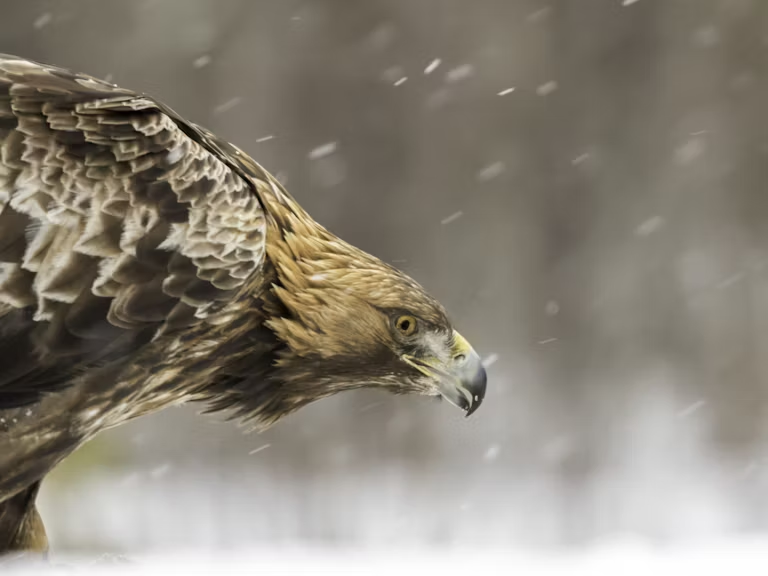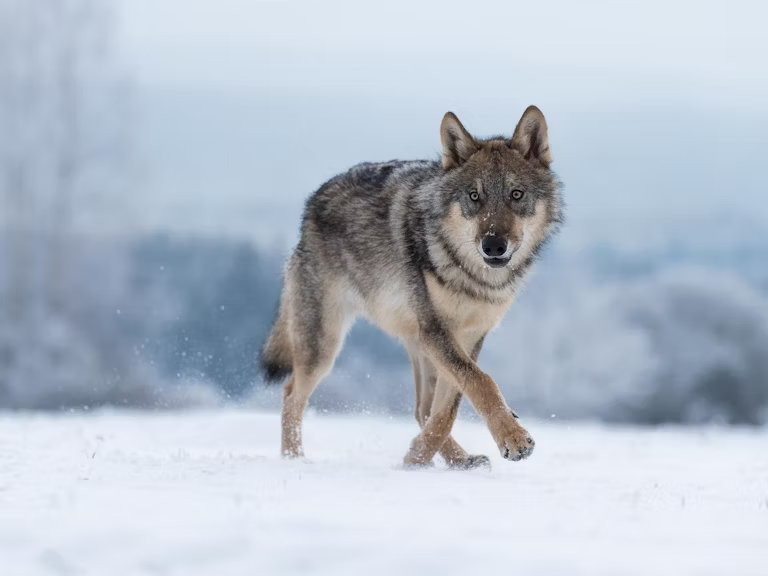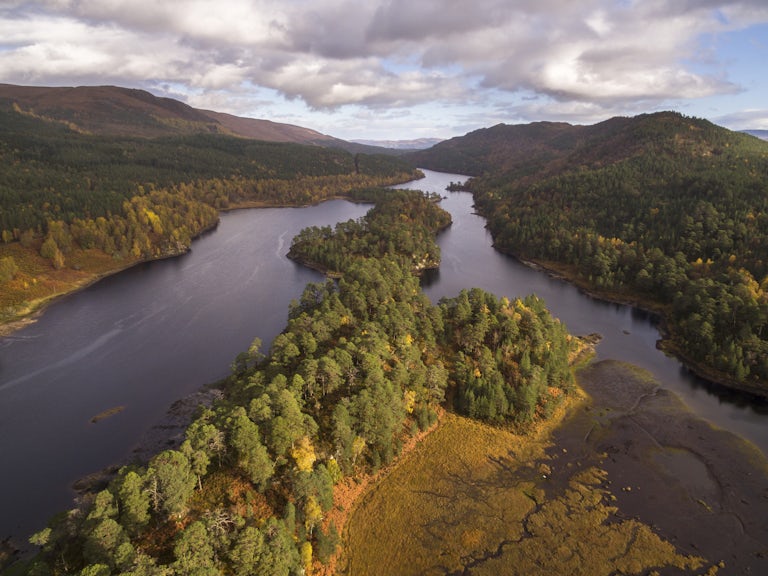Osprey
Pandion haliaetus
This keen-eyed fisher is back from the brink and once again breeding across Britain.
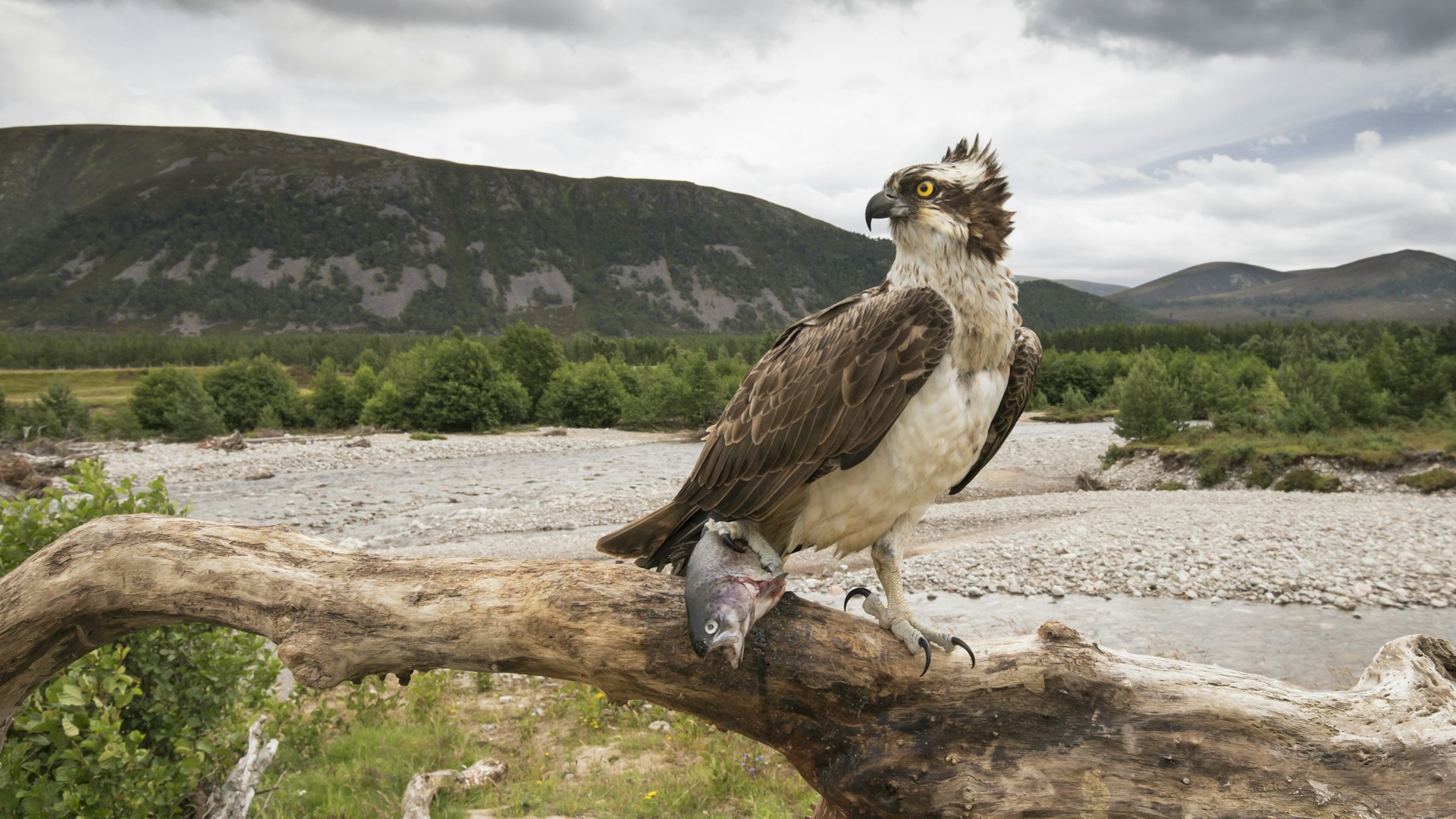
How it shapes its environment
As an apex predator that feeds on medium-sized fish, ospreys influence fish populations, predating on species such as salmon, trout, flounder and mullet. The presence of multiple ospreys typically indicates that a water source and its surrounding areas are unpolluted, offer high-quality habitat and support a healthy food chain.
Where it likes to be
Britain is home to over 200 osprey pairs, which can be spotted between late March and September. They’re primarily breeding in Scotland, with smaller numbers visiting and nesting in England and Wales. During winter, they embark on a 6000km migration to West Africa that takes 4 – 6 weeks [1].
These fish-eating birds of prey are most populous in Scotland but have naturally spread to Cumbria in northwest England, the east Midlands and Wales. They congregate around major watercourses such as rivers, lakes and coastal regions, feeding on both freshwater and marine fish species. To support their recovery, ospreys have already been reintroduced in the east Midlands and northwest Wales.
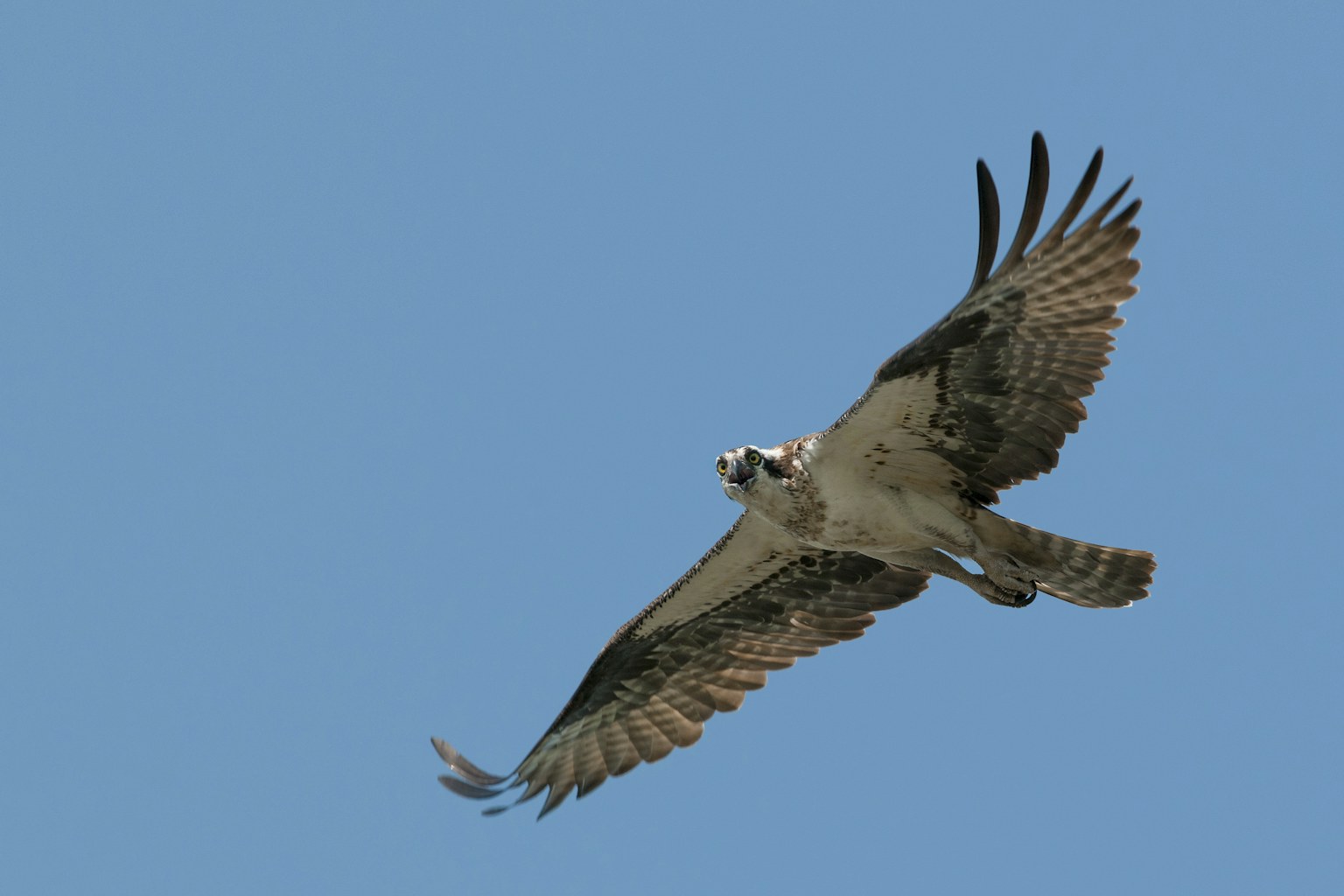
How much space they need
Rather than defending a specific territory, ospreys generally hunt within a 30km radius of their nests and often share their hunting grounds with other ospreys. Mating for life [2], their nests are built over generations and are usually located on treetops, cliffs or platforms in open areas. At exceptionally sturdy nesting sites, older nests can reach up to four metres deep and two metres across [3].
Background story
By the early 1900s, persecution had pushed this species to the brink of extinction. Just a single pair survived in Scotland.
Today, legal protections, natural recolonisation and reintroduction programmes have helped their numbers recover. Despite this resurgence, they rarely breed in Britain, which keeps them classified as Amber on the UK’s conservation priority list [4].
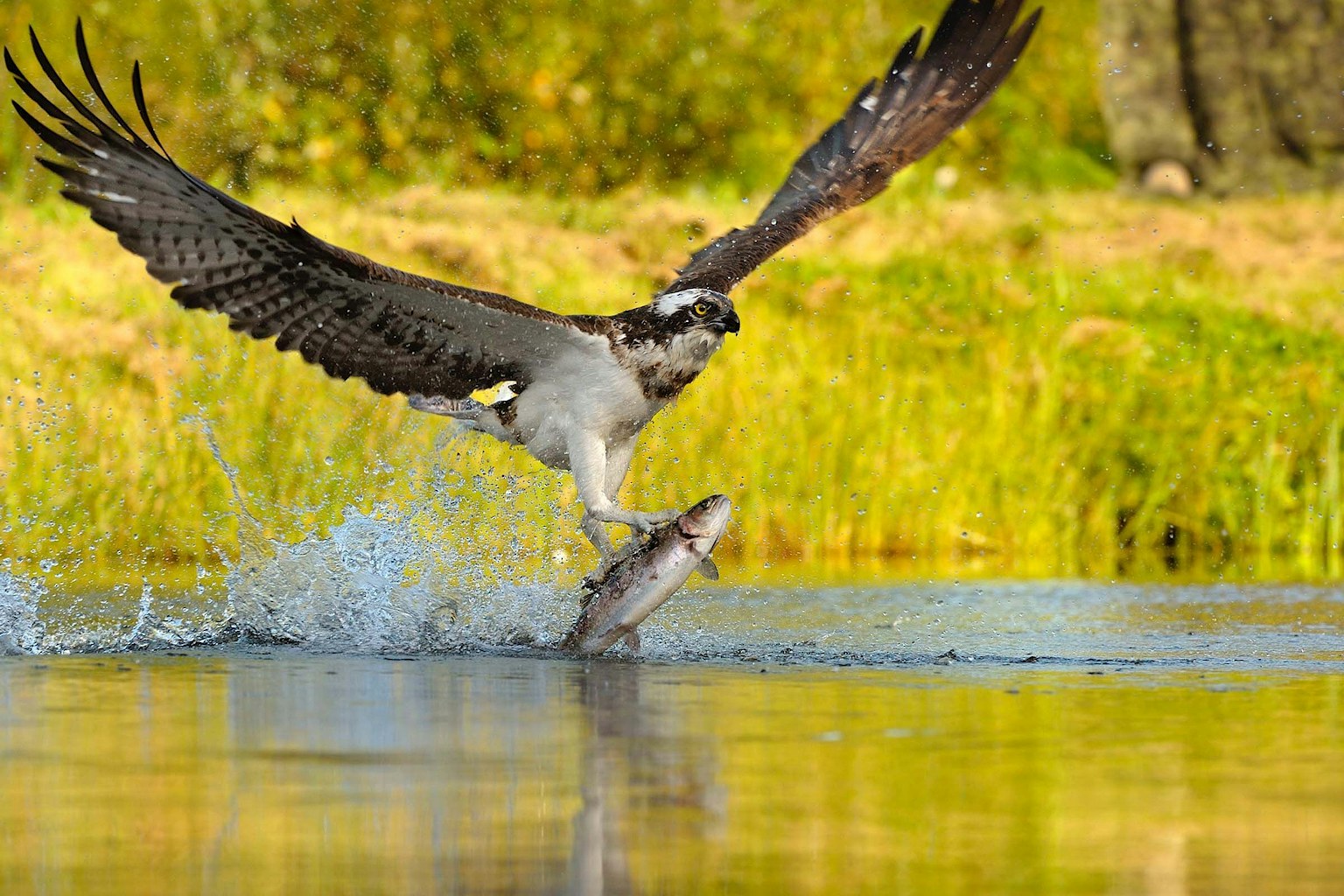
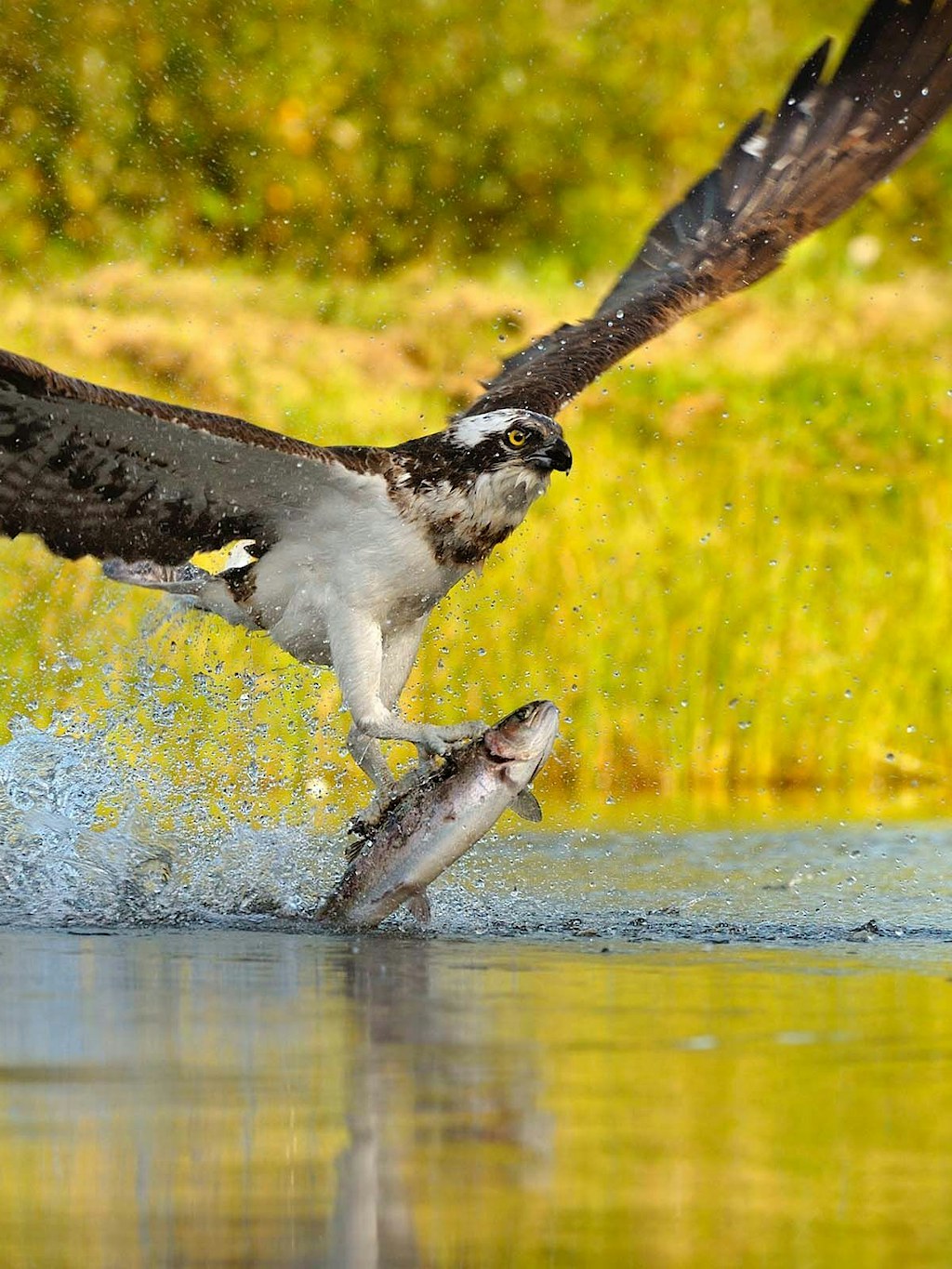
Did you know?
Barbed pads on ospreys’ feet help them grip slippery fish with their talons.
Can we have them in Britain?
Ospreys could thrive in Britain, but their current populations are still limited to a few counties in England, Scotland and Wales.
As a temporary solution, artificial platforms can be constructed to create more nesting opportunities, but in the long term, natural habitat regeneration will be necessary. Ospreys rely on pollution-free water for feeding, so protecting watercourses and coastal areas is essential to their survival.
In summary
- A rare, native bird of prey that’s returned from the brink of extinction.
- An apex predator that influences fish populations, predating on species such as salmon, trout, flounder and mullet.
- Acts as a great indicator of ecosystem health as it needs unpolluted water sources, high quality habitat and a healthy food chain.
- Breeding populations are mainly found in Scotland, with smaller number visiting and nesting in England and Wales.
- Natural habitat regeneration and clean watercourses are essential to their survival in Britain
- Anderson, G. (2023). Osprey migration: facts and map. Woodland Trust.
- Hoskins, R. (2020). Which birds mate for life? And birds’ mating rituals. Woodland trust.
- Birdfact. (2023). Osprey Nesting (All you need to know).
- British Trust for Ornithology. (2021). Birds of Conservation Concern 5 (BOCC5).
